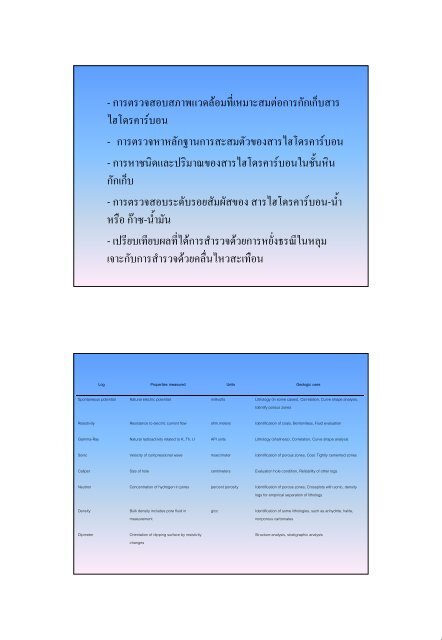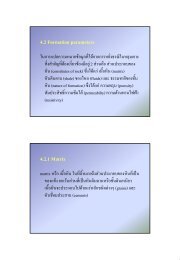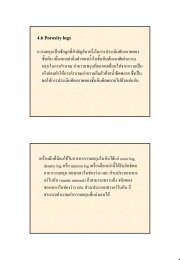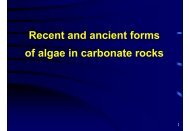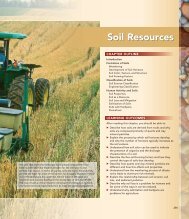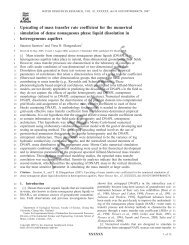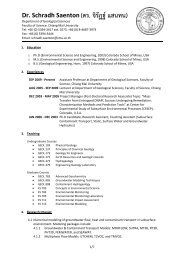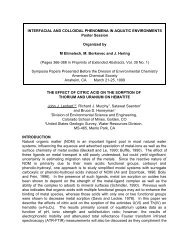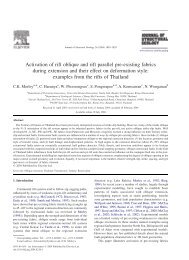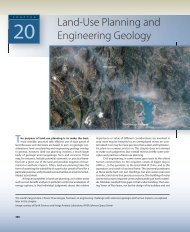Chapter 4 Well logging methods and interpretation
Chapter 4 Well logging methods and interpretation
Chapter 4 Well logging methods and interpretation
You also want an ePaper? Increase the reach of your titles
YUMPU automatically turns print PDFs into web optimized ePapers that Google loves.
- การตรวจสอบสภาพแวดลอมที่เหมาะสมตอการกักเก็บสารไฮโดรคารบอน- การตรวจหาหลักฐานการสะสมตัวของสารไฮโดรคารบอน- การหาชนิดและปริมาณของสารไฮโดรคารบอนในชั้นหินกักเก็บ- การตรวจสอบระดับรอยสัมผัสของ สารไฮโดรคารบอน-น้ําหรือ กาซ-น้ํามัน- เปรียบเทียบผลที่ไดการสํารวจดวยการหยั่งธรณีในหลุมเจาะกับการสํารวจดวยคลื่นไหวสะเทือนLog Properties measured Units Geologic usesSpontaneous potential Natural electric potential millivolts Lithology (in some cases), Correlation, Curve shape analysis,Identify porous zonesResistivity Resistance to electric current flow ohm.meters Identification of coals, Bentonitess, Fluid evaluationGamma-Ray Natural radioactivity related to K, Th, U API units Lithology (shaliness), Correlation, Curve shape analysisSonic Velocity of compressional wave msec/meter Identification of porous zones, Coal. Tightly cemented zonesCaliper Size of hole centimeters Evaluation hole condition, Reliability of other logsNeutron Concentration of hydrogen in pores percent porosity Identification of porous zones, Crossplots with sonic, densitylogs for empirical separation of lithologyDensityBulk density includes pore fluid inmeasurementg/ccIdentification of some lithologies, such as anhydrite, halite,nonporous carbonatesDipmeterOrientation of dipping surface by resistivitychangesStructure analysis, stratigraphic analysis


